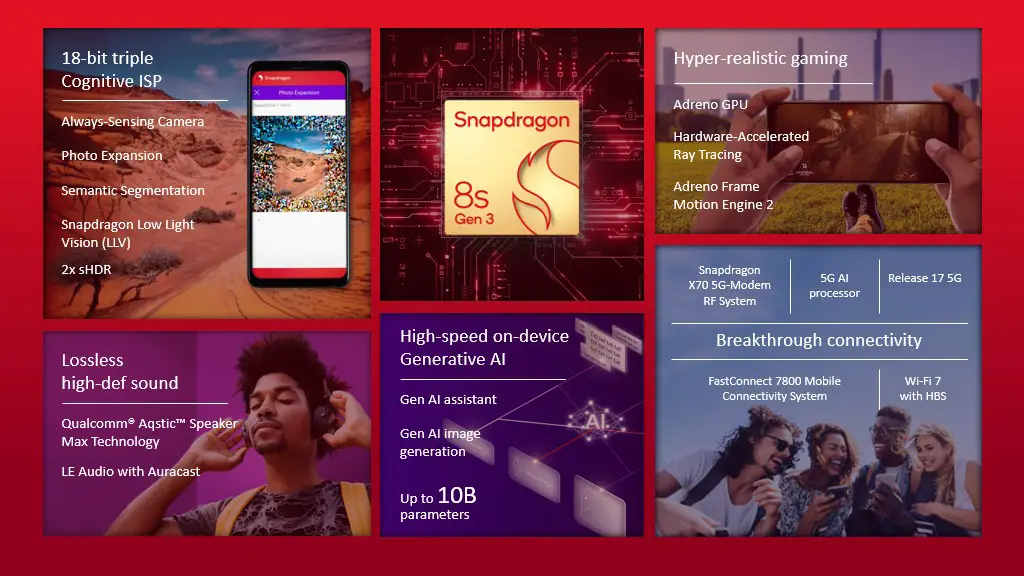In the past, we’ve seen how Qualcomm has refreshed its chipsets to introduce iterative upgrades on its flagship products. But this year, it seems that Qualcomm is going in a slightly different direction with the Snapdragon 8s Gen 3.
It is clear that this chipset will be based on the company’s latest flagship chipset, the Snapdragon 8 Gen 3. The Gen 3 was announced back in October last year. But with this new model, Qualcomm is introducing a slightly under-specced version of its flagship which in theory should make it more affordable.
Compared to the Snapdragon 8 Gen 3

This means that handset makers who want performance levels close to the Snapdragon 8 Gen 3 can do so at a lower cost. In terms of specs, the Snapdragon 8s Gen 3 will be an octa-core chipset. It features a single Prime core clocked up to 3GHz. That will be accompanied by four Performance cores clocked at speeds of up to 2.8GHz. There are also three Efficiency cores with speeds of up to 2GHz.
For context, the Snapdragon 8 Gen 3 has a single Prime core clocked at 3.3GHz, five Cortex-720 performance cores clocked up at 3.2GHz, and two Cortex-520 efficiency cores clocked up to 2.3GHz. There are differences but we doubt that for day-to-day tasks it won’t be very obvious.
Qualcomm has also opted to use the same Adreno GPU that was used in the Gen 2. The Gen 2 was no slouch, but obviously the Adreno 750 used in the Gen 3 is more powerful.
Still powerful

That being said, this doesn’t mean that the Snapdragon 8s Gen 3 should be ignored. There are still plenty of carry-over features from the Gen 3. This includes support for LLMs such as Baichuan-7B, Llama 2, and Gemini Nano.
This will help support on-device generative AI for activities like photography and gaming. It will also be able to support camera sensors of up to 200MP, support for Snapdragon Low Light Vision, real-time hardware-accelerated ray tracing, and displays of up to QHD+ resolution with 144Hz refresh rates.
According to Qualcomm, companies such as Honor, iQOO, realme, Redmi and Xiaomi are adopting the new chipset. The first devices are expected later this month, so if you’re looking forward to close-to flagship-level performance on more affordable devices, then keep an eye out for these brands.









Comments